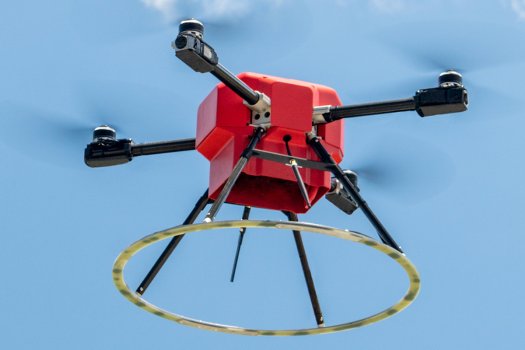K
Kathleen Martin
Guest
In spring 2021, the FAA gave American Robotics (NASDAQ: ONDS), a Massachusetts-based company, permission to fly its industrial commercial “Scout” drone autonomously, requiring no human pilot interface or line of sight observation from the ground.
This was the first such approval from the FAA and forms one indication of how the future of industrial work might look without pilots. The operation would foreseeably allow railroad, pipeline, farming, and mining companies to monitor their assets remotely, with no compromise to human operator safety.
Sold as a Robot-as-a-Service platform as a monthly subscription, the Scout’s autonomous system would allow a user to monitor a single drone, or multiple drones, at distances up to 1,000 miles.
It’s beginning to happen.
Chevron Signs On
In late January, Chevron (NYSE: CVX) became the second Fortune 100 customer in the oil and gas space to partner with American Robotics. In a statement, Reese Mozer, CEO and co-founder of American Robotics, called his efforts “game-changing” and explained how the new drone platform would empower customers.
“With Scout System, we are providing the oil and gas industry with a dramatically more efficient and effective way to manage, monitor, and inspect their assets. Analytics that were previously unattainable due to high costs of operation are now available through the Scout System, allowing users to make informed decisions in real-time that will drive their business forward.”
Everything is automated, from landing to charging to data processing. Once installed, Scout systems will run missions autonomously, collecting, processing, and analyzing data. The drone lives in a weatherproof charging and data processing station called ScoutBase, and once it is installed at a location, customers can interact with the system via an app.
Continue reading: https://www.flyingmag.com/autonomous-drones-could-change-aviation-landscape/
This was the first such approval from the FAA and forms one indication of how the future of industrial work might look without pilots. The operation would foreseeably allow railroad, pipeline, farming, and mining companies to monitor their assets remotely, with no compromise to human operator safety.
Sold as a Robot-as-a-Service platform as a monthly subscription, the Scout’s autonomous system would allow a user to monitor a single drone, or multiple drones, at distances up to 1,000 miles.
It’s beginning to happen.
Chevron Signs On
In late January, Chevron (NYSE: CVX) became the second Fortune 100 customer in the oil and gas space to partner with American Robotics. In a statement, Reese Mozer, CEO and co-founder of American Robotics, called his efforts “game-changing” and explained how the new drone platform would empower customers.
“Before our FAA approvals, asset managers that used drones to monitor their oil and gas fields needed to employ pilots and visual observers to fly the systems manually, and then manually convert the data into actionable insights,” Mozer explained.“…drone use is about collecting and analyzing data continuously, so full autonomy is required to unlock the full potential.” Reese Mozer, CEO and co-founder, American Robotics
“With Scout System, we are providing the oil and gas industry with a dramatically more efficient and effective way to manage, monitor, and inspect their assets. Analytics that were previously unattainable due to high costs of operation are now available through the Scout System, allowing users to make informed decisions in real-time that will drive their business forward.”
Everything is automated, from landing to charging to data processing. Once installed, Scout systems will run missions autonomously, collecting, processing, and analyzing data. The drone lives in a weatherproof charging and data processing station called ScoutBase, and once it is installed at a location, customers can interact with the system via an app.
Continue reading: https://www.flyingmag.com/autonomous-drones-could-change-aviation-landscape/

